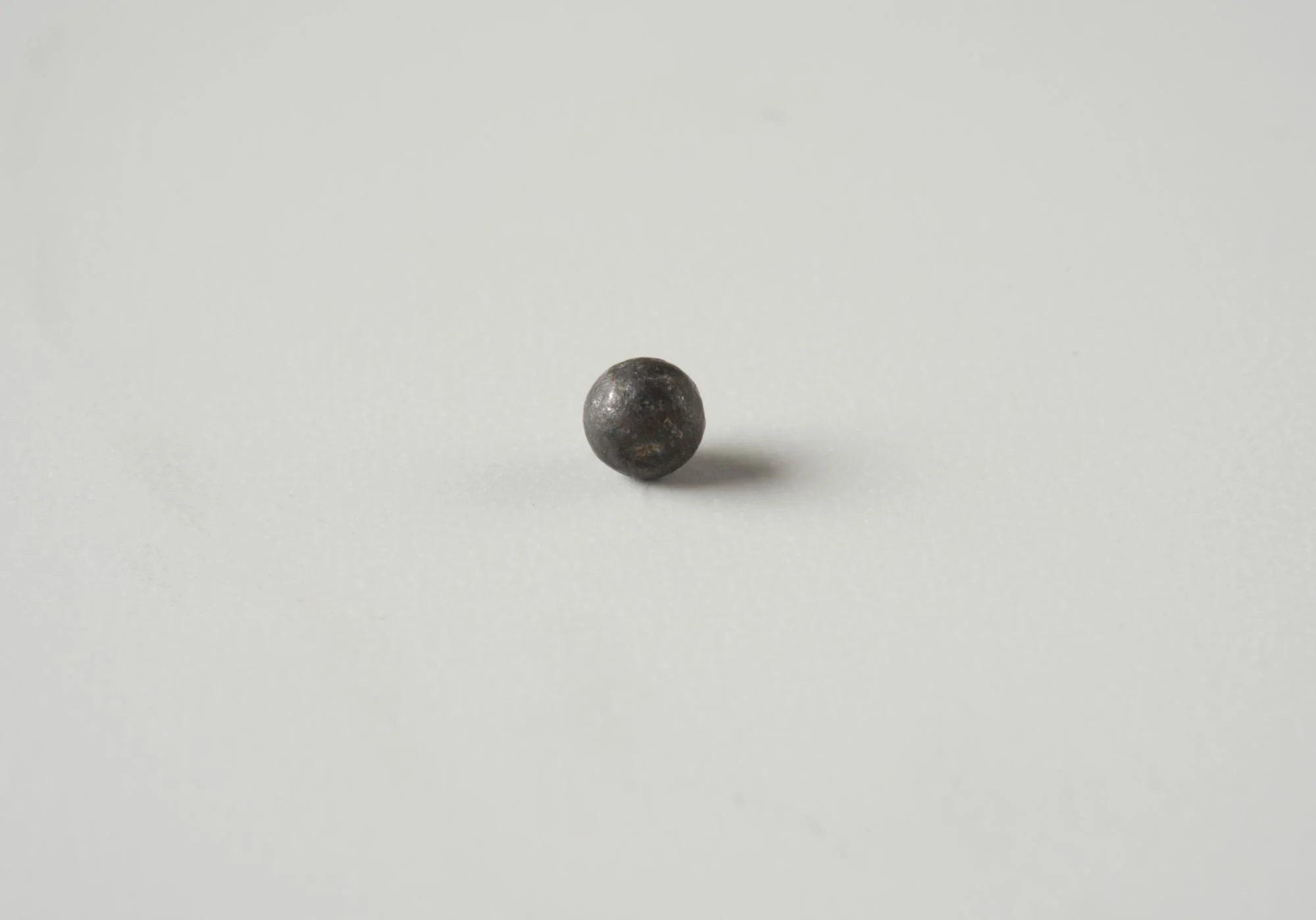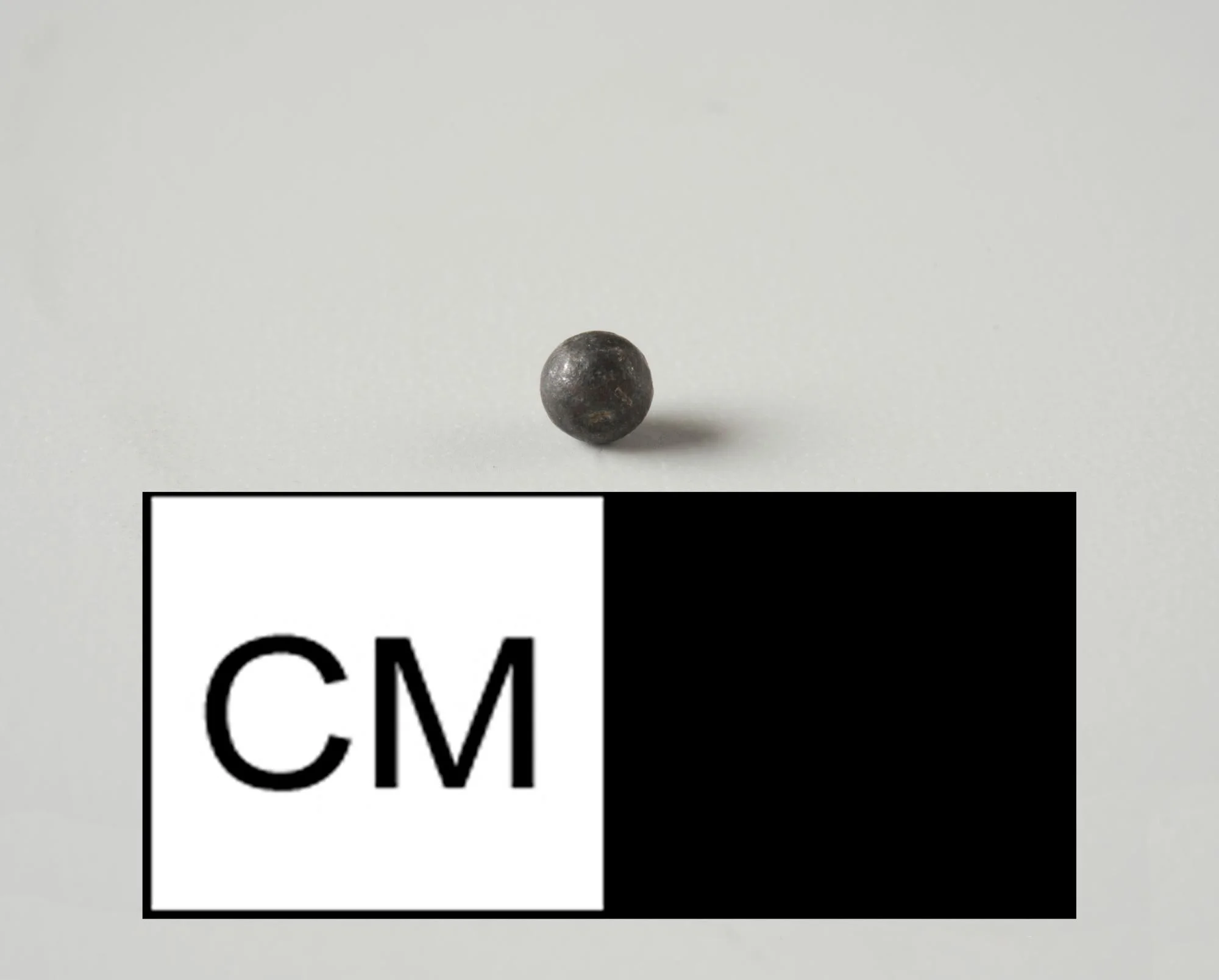Notes
This lead ball is a piece of shot. This particular shot was produced by the dropping method. In this process, molten lead was dropped from a height into a container of water. The greater the height from which the lead was dropped, the rounder the shot. Various forms of this technique were developed over the seventeenth and eighteenth century, but all shot produced this way lack the evidence of mold seams or stems.
Shot were used in a variety of firearms in the eighteenth century, including muskets, rifles, and pistols. The presence of this and other firearms related artifacts at the House for Families, and faunal remains of wild mammals and birds indicate residents of the House for Families would have had controlled access to guns for hunting.
This shot represents the most common diameter size found in the House for Families lead shot assemblage. The measurements were recorded in the following fashion: length measured perpendicular to the dimple on one plane, width measured perpendicular to the dimple on another plane, and height measured from the dimple to the opposite end.
Object Type
Has it Been Conserved?
No
Where Was It Found?
Project Site: House for Families [more details]
Material
Manufacturing Technology
Form
Completeness
Date
18th century
Country of Origin
Dimensions
2.61mm x 2.41mm x 2.67mm (W x H x L)
Illustration shows object in comparison to the size of a quarter
Weight
0.1 gram(s)
Project: House for Families
The structure identified as the “House for Families” on the 1787 Vaughan plan likely housed the majority of the enslaved population living at the Mansion House Farm for much of the second half of the eighteenth century. The building was in existence from circa 1760 until it was demolished in late 1792 or early 1793. The archaeological evidence for the structure consisted of a brick-lined storage cellar (44FX762/40-47) measuring roughly six feet by six feet. Historically the cellar served as a handy trash receptacle once it ceased to be used for its original storage function, and through extensive excavation has yielded an extremely rich assemblage of household refuse. The analysis of these remains offers the opportunity to study important aspects of the daily lives of Mount Vernon's enslaved community.
See All Objects From this Dig

 All Other Artifacts
All Other Artifacts